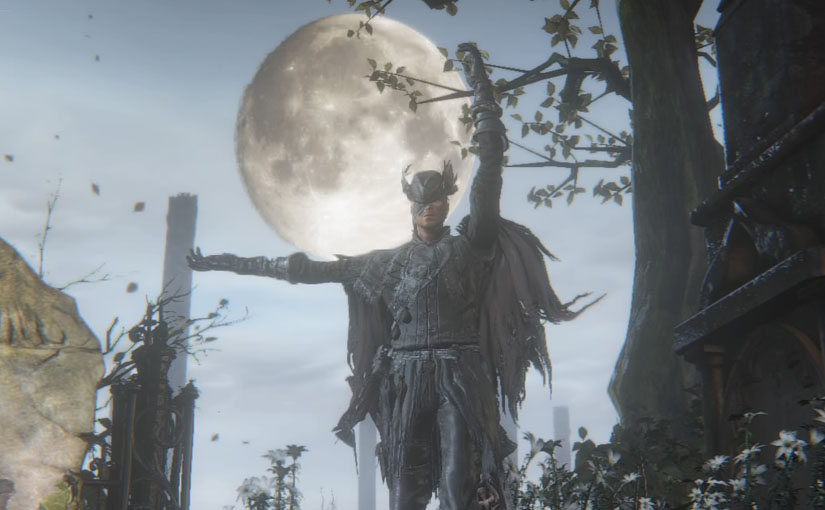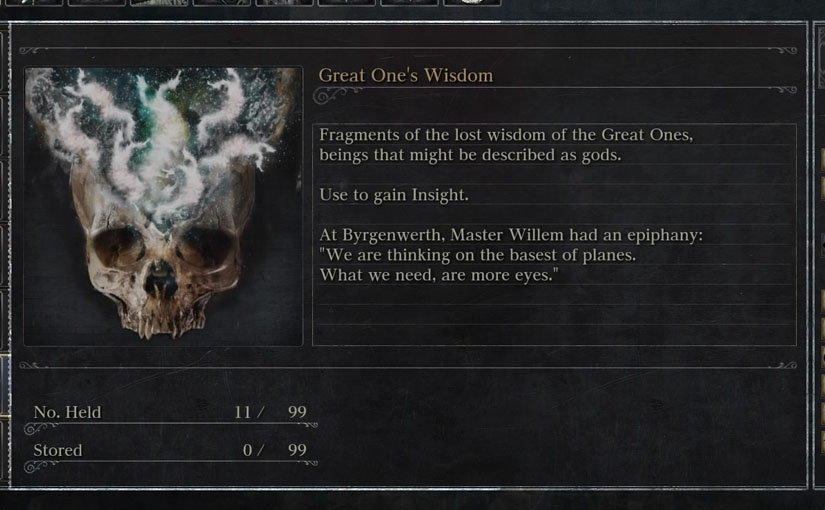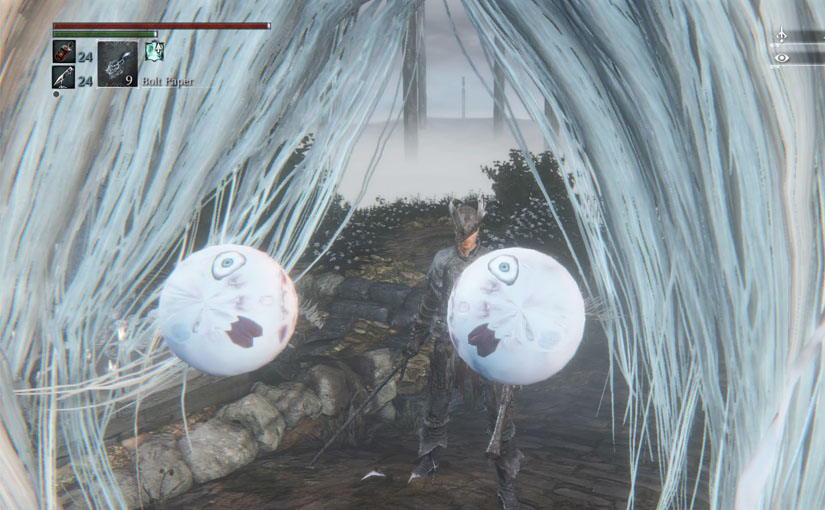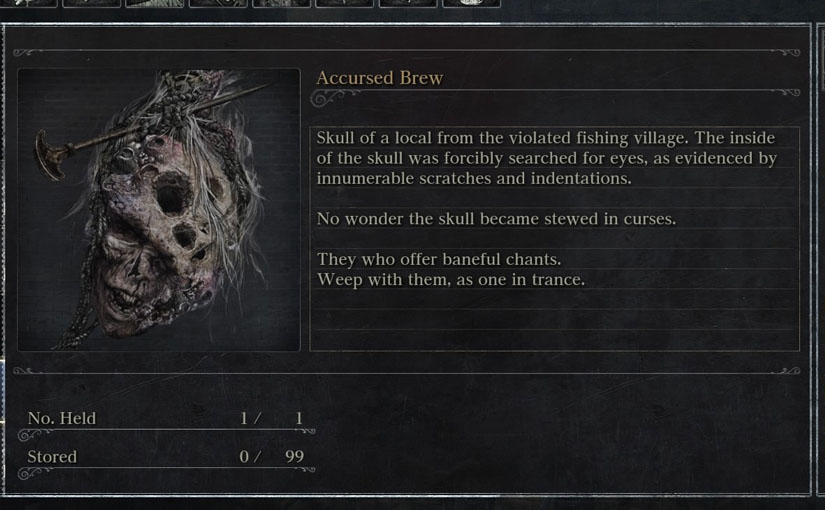In my last post, I talked about how I was feeling kind of down about my writing, and how I thought about deleting the blog entirely. Aside from coming to the conclusion that it would be stupid to throw two years of work down the drain, I’ve had some time to think, and reevaluate why I was writing in the first place. I feel like I’ve been caught up on some aspects of blogging that I never used to think about, and it really took away from my enjoyment of the whole process. I’ve taken a few months off, and while I’m still not sure how often I’ll be churning out articles (or if I’m still going to do reviews at all) I do want to keep the blog going – even if that means producing one piece a year. I had another piece on sexism and character design in the works, but I’m not sure it’s going to come to anything. If it doesn’t work out the way I had imagined it in my mind, I’ll probably just scrap the entire thing. Also just wanted to say a quick thank you to all the people who were kind, and encouraged me to keep up the blog. Anyway, enough preamble – on to Bloodborne!

The world of Bloodborne has always captivated my imagination – the oppressive atmosphere, visceral gameplay, and mindblowing visuals are all part of why this game remains so timeless. However, design aside, the main reason I adore Bloodborne so much is the cleverness of the writing; the game manages to incorporate smaller motifs to enhance its narrative themes in a way that few modern titles do. One of the signature ways that Bloodborne builds its layered narrative is through the use of wordplay, and double entendre – and boy does it warm my literary heart. So how exactly does Bloodborne do this, and why is it so effective? I’m glad you asked!
Bloodborne is an interesting case to begin with, because of the shape the overarching narrative takes – what begins as a relatively straightforward gothic tale about a beastly scourge eventually becomes a mind-boggling, sanity-testing, full blown Lovecraftian cosmic horror. The audience is lead to believe one thing before the game shifts gears and the true story, hidden beneath the surface, is revealed. This sort of bait-and-switch is used consistently throughout the game, particularly in certain names and items which have multiple meanings. This is where the concept of double entendre comes in: many in-game names will have a secondary meaning that isn’t obvious at first glace. Through clever use of wordplay, Bloodborne further reinforces its key thematic elements (like language and communication), and creates a truly unique narrative in the process.
The first motif I want to focus on is one that features prominently throughout the game: eyes. “Grant us eyes, grant us eyes” – did you get enough of that dialogue in the Micolash fight? But what does all this eye imagery achieve? Well, let’s start with Insight: in terms of gameplay, Insight is an obtainable item (via Madman’s Knowledge and Great One’s Wisdom) that can be used to purchase items, and increase your character’s Insight counter. You can also gain Insight each time you enter a significant area in-game, or encounter a boss for the first time. Of course, the literal meaning of the term “insight” indicates a greater understanding of a subject, or “the ability to see and understand the truth about people and situations.” It stands to reason that as you progress through the game, your character would gain more insight into the world and its inhabitants; however, Insight also has a few added game mechanics, as well as its double-meaning.

There’s one specific item, known as the One Third of Umbilical Cord – which, general grodiness aside, are described in-game as: “A great relic, also known as the Cord of the Eye. Every infant Great One has this precursor to the umbilical cord. Use to gain Insight and, so they say, eyes on the inside, although no one remembers what that truly entails.” I’ve always thought it was interesting that these items were also known as “cords” because, even though the item looks like a cord lined with eyes, it also reminds me of an optic nerve; this nerve connects your eye to your brain, and allows it to interpret what you’re seeing. In Bloodborne, Insight literally means to have eyes growing on the inside of your head (we’ll discuss more in a bit) so it’s fascinating to me that these umbilical cords would potentially double as some kind of vehicle to enable sight. Though our eyes have yet to open, according to Master Willem, our hunter’s ability to perceive the truth of the world is directly tied to Insight.
“The indescribable sound is broadcast with the caster’s own vocal cords, which begs the question, what terrible things lurk deep within the frames of men?”
In gameplay terms, the more Insight your character has, the more difficult certain encounters become – for instance, the Witches of Hemwick are well known for being one of the simpler boss fights. However, having even one point of Insight complicates the encounter, by causing the Mad One enemies to spawn. Entering the fight with zero Insight, on the other hand, means you only have to contend with the two witches on their own. While wandering through Yharnam, having a large amount of Insight (forty or more) will allow you to see the otherworldly creatures known as the Lesser Amygdala. Normally, you would only be aware of their presence past the Blood Moon phase late-game, but diligently collecting Insight can potentially reveal their presence much earlier.
While these are the mechanics of Insight, in Bloodborne, nothing is as it seems. The further you progress into the game, the more is revealed about the double-meaning of the term – particularly as pertains to Byrgenwerth, and its master, Willem. According to one of the Third Umbilical Cords, which we talked about earlier, Willem “sought the cord in order to elevate his being and thoughts to those of a Great One, by lining his brain with eyes.” You know, as you do. So here we get another confirmation of the underlying meaning of Insight – truly, to have eyes (indeed, ‘sight’) on the inside. These extra eyes can be seen on certain bosses, like Ludwig the Accursed. Specific enemies (especially the boars in the Nightmare of Mensis area) are also sporting these extra sets of eyeballs. There are even items that make reference specifically to the growth of eyes on the inside, like the Accursed Brew, obtained in the Old Hunters DLC: “The inside of the skull was forcibly searched for eyes, as evidenced by innumerable scratches and indentations.”

The Old Hunters also added an item called the “Eye of a Blood Drunk Hunter” which explains that, when hunters are driven mad with bloodlust, it leads to the collapse of their pupils, and the decay of their eyes. This might explain why certain enemies wear wrappings around their eyes – you can see this with Father Gascoigne, for example – in an effort to hide their descent into beasthood. It seems the closer humanity treads to their beastly potential, the less their ability to see, and ultimately “perceive” becomes. Willem (and members of the Choir, as seen in their traditional garb) also wear masks that cover their eyes, but for a different purpose. Willem sought to turn his sight inward, literally, to his brain as an avenue to elevate his state of being.
Willem’s disciples from Byrgenwerth would eventually diverge into two separate groups: The Choir was one branch of what the Healing Church would eventually become, while the other was the School of Mensis. The School of Mensis, lead by everyone’s favourite, Micolash Cage, is obsessed with their desire to commune with a Great One: “Madmen toil surreptitiously in rituals to beckon the moon. Uncover their secrets.” The moon, which you learn upon completing the game, is actually a Great One known as the Moon Presence – this is what Mensis is trying to contact, and lure to Yharnam. Now, to “Mensis” specifically – the word is Latin for month, most likely referring to the monthly phases of the moon. Mensis… Mensis… you know what else that sounds like? Menses. Also occurs on a monthly cycle, conveniently. That’s right kids, we’re talking about menstruation – sorry if this disturbs your delicate sensibilities.
“We are born of the blood, made men by the blood, undone by the blood. Our eyes are yet to open… Fear the old blood.”
Of course, we’d be remiss if we didn’t talk about blood in Bloodborne, and more importantly, how it relates to childbirth (which, you know, menses is kind of crucial to). “When the red moon hangs low, the line between man and beast is blurred. And when the Great Ones descend, a womb will be blessed with child.” In case you haven’t already heard enough about umbilical cords and childbirth, let me tell you about a certain problem of the Great Ones – they are apparently incapable of reproducing. According to the lore found on all the cords, the Great Ones always lose their children, and thus, seek surrogates. This seems to be the main reason that the Great Ones are interested in humanity in the first place – it explains Arianna giving birth to a baby… Great One? Thing? And of course, one of the key events critical to understanding the plot of Bloodborne: the ancient Pthumerian Queen giving birth to an infant Great One known as Mergo.
This Pthumerian Queen just so happens to share her namesake with the city in which Bloodborne takes place – Yharnam. Queen Yharnam appears as a boss in the Chalice Dungeons, but you can also see her after defeating Rom, the Vacuous Spider, and Mergo’s Wetnurse. The front of her dress is soaked in blood, indicating that Mergo was possibly ripped from her womb – what happens after that, we’ll never know. I do, however, think it’s important that the city afflicted by the beastly scourge shares its name with her. When characters refer to the “Curse of Yharnam” or say that the town is cursed, the meaning seems obvious – but it could also mean a curse started by Queen Yharnam. Her harrowing experiences (and their discovery by the tomb prospectors of Byrgenwerth) directly influence the shape of Bloodborne’s narrative. The events that began with Queen Yharnam come to a head on the night that our hunter joins the fray.

Alright, I’ve meandered a bit past my original point because I literally cannot shut up about this game, so let’s circle back. I’ve outlined some words and concepts, along with their double meanings (Insight, Mensis, Yharnam) but how does this clever use of verbiage relate to the larger thematic picture of Bloodborne? One of the most crucial themes of the game (in my mind, at least) is communication – making contact, if you will. Every single faction in Bloodborne, regardless of their methods, is attempting to make contact with the Great Ones. Whether it’s using their ancient blood, or trying to line their brains with eyes, that contact is at the heart of the narrative. But communication is tricky, isn’t it? Humans only have one way of interpreting the language of the Great Ones – via the Runes we see and use as hunters – but that isn’t quite the same thing.
“The manifestation of madness comes from a mind teetering on the very brink, but has a sane mind ever produced anything of true significance?”
I’ve always thought it was fascinating that Runes were described as being “etched” in the hunters mind, and that having eyes on the inside of your skull might make interpreting these symbols easier, but that’s a whole side tangent. These factions within Bloodborne are concerned with trying to elevate humanity: elevate our thoughts, our being, by communicating with these eldritch “gods.” The ultimate failure of each of these groups to achieve their goals, and the disastrous fallout of their actions, demonstrates just how difficult (impossible, even) communication can be. Bloodborne leans into this concept by highlighting how unreliable language can be; including these names with double-meanings that can be interpreted multiple ways showcases this idea so well. This is also mirrored in the way the overall story switches from gothic to cosmic – is your mind melting yet? The way that Bloodborne utilizes its motifs – the eyes, the reproductive imagery (if you’re interested, check out the “Blood Dreg” item and tell me what you think it looks like) to reinforce its narrative themes has always blown me away.
I was aiming for “semi-coherent” when I started these ramblings on how clever Bloodborne’s writing is, so hopefully we got there. TLDR: Words are hard. Don’t explore the cosmos. Don’t try to discover the eldritch truth – 0/10, you will lose your mind. This is the first post I’ve written in a while, and I’m feeling kind of rusty so let’s leave it there. Hopefully you found something interesting or new in my ravings – maybe you’ve found it eye-opening? Ok, I’m done now.


Great analysis! I got a kick out of explaining the “Mensis” wordplay to my husband when I first played BB.
LikeLiked by 1 person
Literally my favourite word in the game LOL.
LikeLike
Excellent post. The dark, gothic…(overused word alert)Lovecraftian setting of Bloodborne is my absolute favorite over the more traditional high fantasy or feudal samurai settings of Dark Souls and Sekiro.
This could also segue into my usual point when the whole “difficultly in video games” thing pops up every other couple days – It seems very…reductive to boil everything about Bloodborne/FromSoft games into “they shouldn’t have an easy mode because they’re challenging, that IS the game”, when there’s layers upon layers of backstory and world lore. Along with of course, sounding like gatekeeping asshats…
LikeLiked by 1 person
I have a reaaallly hard time picking a favourite between Dark Souls, Sekiro, and Bloodborne, but I definitely think Bloodborne has the strongest setting in terms of presentation and atmosphere!
When I see writing on this kind of level, it makes me genuinely sad that it feels out of reach to a lot of people, and that they won’t be able to experience it firsthand. These games were never designed with HARDCORE DIFFICULTY in mind, and it irritates me to no end that that is what they’re universally known for, haha.
LikeLiked by 1 person
Glad to see you back!
LikeLiked by 1 person
Thanks! Appreciate it! 🙂
LikeLike